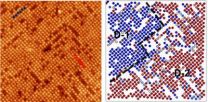(Press-News.org) NEW YORK, NY (July 24, 2014) – Scientists at The New York Stem Cell Foundation (NYSCF) Research Institute are one step closer to creating a viable cell replacement therapy for multiple sclerosis from a patient's own cells.
For the first time, NYSCF scientists generated induced pluripotent stem (iPS) cells lines from skin samples of patients with primary progressive multiple sclerosis and further, they developed an accelerated protocol to induce these stem cells into becoming oligodendrocytes, the myelin-forming cells of the central nervous system implicated in multiple sclerosis and many other diseases.
Existing protocols for producing oligodendrocytes had taken almost half a year to produce, limiting the ability of researchers to conduct their research. This study has cut that time approximately in half, making the ability to utilize these cells in research much more feasible.
Stem cell lines and oligodendrocytes allow researchers to "turn back the clock" and observe how multiple sclerosis develops and progresses, potentially revealing the onset of the disease at a cellular level long before any symptoms are displayed. The improved protocol for deriving oligodendrocyte cells will also provide a platform for disease modeling, drug screening, and for replacing the damaged cells in the brain with healthy cells generated using this method.
"We are so close to finding new treatments and even cures for MS. The enhanced ability to derive the cells implicated in the disease will undoubtedly accelerate research for MS and many other diseases," said Susan L. Solomon, NYSCF Chief Executive Officer.
"We believe that this protocol will help the MS field and the larger scientific community to better understand human oligodendrocyte biology and the process of myelination. This is the first step towards very exciting studies: the ability to generate human oligodendrocytes in large amounts will serve as an unprecedented tool for developing remyelinating strategies and the study of patient-specific cells may shed light on intrinsic pathogenic mechanisms that lead to progressive MS". said Dr. Valentina Fossati, NYSCF – Helmsley Investigator and senior author on the paper.
In multiple sclerosis, the protective covering of axons, called myelin, becomes damaged and lost. In this study, the scientists not only improved the protocol for making the myelin-forming cells but they showed that the oligodendrocytes derived from the skin of primary progressive patients are functional, and therefore able to form their own myelin when put into a mouse model. This is an initial step towards developing future autologous cell transplantation therapies in multiple sclerosis patients
This important advance opens up critical new avenues of research to study multiple sclerosis and other diseases. Oligodendrocytes are implicated in many different disorders, therefore this research not only moves multiple sclerosis research forward, it allows NYSCF and other scientists the ability to study all demyelinating and central nervous system disorders.
Multiple sclerosis is a chronic, inflammatory, demyelinating disease of the central nervous system, distinguished by recurrent episodes of demyelination and the consequent neurological symptoms. Primary progressive multiple sclerosis is the most severe form of multiple sclerosis, characterized by a steady neurological decline from the onset of the disease. Currently, there are no effective treatments or cures for primary progressive multiple sclerosis and treatments relies merely on symptom management.
INFORMATION:
NYSCF stem cell researcher Valentina Fossati, PhD, is the senior author and NYSCF researcher Panagiotis Douvaras, PhD, is the first author of this study.
Key collaborators on this research included Dr. Saud Sadiq and the Tisch Multiple Sclerosis Research Center of New York where patients were recruited, Dr. Fraser Sim of the State University of New York at Buffalo for the in vivo studies, and Dr. James Goldman of Columbia University Medical Center.
The New York Stem Cell Foundation research was supported by a NYSCF – Helmsley Early Career Investigator Award, The New York Stem Cell Foundation, and The Leona M. and Harry B. Helmsley Charitable Trust. The in vivo studies were supported by the Empire State Stem Cell Fund through New York State Department of Health, Contact C028108 to FJS.
About The New York Stem Cell Foundation
The New York Stem Cell Foundation (NYSCF) is an independent organization founded in 2005 to accelerate cures and better treatments for patients through stem cell research. NYSCF employs over 45 researchers at the NYSCF Research Institute, located in New York, and is an acknowledged world leader in stem cell research and in developing pioneering stem cell technologies, including the NYSCF Global Stem Cell ArrayTM. Additionally, NYSCF supports another 60 researchers at other leading institutions worldwide through its Innovator Programs, including the NYSCF – Druckenmiller Fellowships and the NYSCF – Robertson Investigator Awards. NYSCF focuses on translational research in a model designed to overcome the barriers that slow discovery and replaces silos with collaboration.
NYSCF researchers have achieved seven major discoveries in the field, including: the first diploid stem cell line from a patient with type 1 diabetes using somatic cell nuclear transfer in April 2014; the first stem cell-derived beta cell model that accurately reflects the features of a genetic form of diabetes in June 2013; the generation of functional, immune-matched bone substitutes from patients' skin cells (featured in The Wall Street Journal in May 2013); the discovery of a clinical cure to prevent transmission of maternally inherited mitochondrial diseases in December 2012; the derivation of the first-ever patient specific embryonic stem cell line (#1 Medical Breakthrough of 2011 by Time magazine); the discovery of a new way to reprogram stem cells; and, the creation of the first disease model from induced pluripotent stem cells (also named the #1 Medical Breakthrough by Time magazine in 2008). More information is available at http://www.nyscf.org.
NYSCF scientists one step closer to cell therapy for multiple sclerosis patients
New study shows efficiency at making living human cells from MS patients' skin samples
2014-07-24
ELSE PRESS RELEASES FROM THIS DATE:
Study indicates large raptors in Africa used for bushmeat
2014-07-24
Bushmeat, the use of native animal species for food or commercial food sale, has been heavily documented to be a significant factor in the decline of many species of primates and other mammals. However, a new study indicates that more than half of the species being consumed are birds, particularly large birds like raptors and hornbills.
"By surveying not only the meat made available for sale but the meat that is being eaten inside the forest by hunters and brought to villages for consumption, we noted a significant percentage attributed to bird species," said Bethan ...
New study draws links between wildlife loss and social conflicts
2014-07-24
Citing many sobering examples of how wildlife loss leads to conflict among people around the world, a new article co-authored by Wildlife Conservation Society (WCS) Health & Ecosystems: Analysis of Linkages (HEAL) Program Director Dr. Christopher Golden, calls for an interdisciplinary approach to tackle global biodiversity decline.
The harvest of wild animals directly supports about 15% of the world's people and provides protein for more than a billion of the world's poor. It should come as no surprise that today's unprecedented loss of wildlife, is bringing with it ...
Hubble finds 3 surprisingly dry exoplanets
2014-07-24
Astronomers using NASA's Hubble Space Telescope have gone looking for water vapor in the atmospheres of three planets orbiting stars similar to the sun -- and have come up nearly dry.
The three planets, known as HD 189733b, HD 209458b, and WASP-12b, are between 60 and 900 light-years away from Earth and were thought to be ideal candidates for detecting water vapor in their atmospheres because of their high temperatures where water turns into a measurable vapor.
These so-called "hot Jupiters" are so close to their star they have temperatures between 1,500 and 4,000 degrees ...
The microbes make the sake brewery
2014-07-24
A sake brewery has its own microbial terroir, meaning the microbial populations found on surfaces in the facility resemble those found in the product, creating the final flavor according to research published ahead of print in the journal Applied and Environmental Microbiology. This is the first time investigators have taken a microbial census of a sake brewery.
Many sake makers inoculate with both bacteria and yeast, says corresponding author David A. Mills of the University of California, Davis, but he and his colleagues investigated a sake brewery where inoculation ...
New imaging agent provides better picture of the gut
2014-07-24
MADISON — A multi-institutional team of researchers has developed a new nanoscale agent for imaging the gastrointestinal (GI) tract. This safe, noninvasive method for assessing the function and properties of the GI tract in real time could lead to better diagnosis and treatment of gut diseases.
Illnesses such as small bowel bacterial overgrowth, irritable bowel syndrome and inflammatory bowel disease all occur in the intestine and can lead to serious side effects in patients with diseases such as diabetes and Parkinson's.
Until now, there hasn't been a good way to ...
Brain's dynamic duel underlies win-win choices
2014-07-24
People choosing between two or more equally positive outcomes experience paradoxical feelings of pleasure and anxiety, feelings associated with activity in different regions of the brain, according to research led by Amitai Shenhav, an associate research scholar at the Princeton Neuroscience Institute at Princeton University.
In one experiment, 42 people rated the desirability of more than 300 products using an auction-like procedure. Then they looked at images of paired products with different or similar values and were asked to choose between them. Their brain activity ...
TGen-led study seeks to understand why some HIV-positive men are more infectious
2014-07-24
FLAGSTAFF, Ariz. — July 24, 2014 — A new study led by the Translational Genomics Research Institute (TGen) provides insights into the interplay among bacteria, viruses and the immune system during HIV infection.
Currently, doctors measure HIV-positive men's infectivity — their potential to infect others — based on their blood viral load. However, some men produce large amounts of virus in their semen despite having low levels in their blood. Researchers call this "compartmentalization," where different levels of the virus can be found in different parts of the body; in ...
Parched West is using up underground water, UCI, NASA find
2014-07-24
Irvine, Calif., July 24, 2014 — A new study by University of California, Irvine and NASA scientists finds more than 75 percent of the water loss in the drought-stricken Colorado River Basin since late 2004 came from underground resources. The extent of groundwater loss may pose a greater threat to the water supply of the western United States than previously thought.
This study is the first to quantify the amount that groundwater contributes to the water needs of western states. According to the U.S. Bureau of Reclamation, the federal water management agency, the basin ...
ORNL study reveals new characteristics of complex oxide surfaces
2014-07-24
OAK RIDGE, Tenn., July 24, 2014 -- A novel combination of microscopy and data processing has given researchers at the Department of Energy's Oak Ridge National Laboratory an unprecedented look at the surface of a material known for its unusual physical and electrochemical properties.
The research team led by ORNL's Zheng Gai examined how oxygen affects the surface of a perovskite manganite, a complex material that exhibits dramatic magnetic and electronic behavior. The new avenue to understand surface behavior could benefit researchers who are interested in using a wide ...
Earlier Stone Age artifacts found in Northern Cape of South Africa
2014-07-24
Excavations at an archaeological site at Kathu in the Northern Cape province of South Africa have produced tens of thousands of Earlier Stone Age artifacts, including hand axes and other tools. These discoveries were made by archaeologists from the University of Cape Town (UCT), South Africa and the University of Toronto (U of T), in collaboration with the McGregor Museum in Kimberley, South Africa.
The archaeologists' research on the Kathu Townlands site, one of the richest early prehistoric archaeological sites in South Africa, was published in the journal, PLOS ONE, ...
LAST 30 PRESS RELEASES:
Future parents more likely to get RSV vaccine when pregnant if aware that RSV can be a serious illness in infants
Microbiota enterotoxigenic Bacteroides fragilis-secreted BFT-1 promotes breast cancer cell stemness and chemoresistance through its functional receptor NOD1
The Lundquist Institute receives $2.6 million grant from U.S. Army Medical Research Acquisition Activity to develop wearable biosensors
Understanding the cellular mechanisms of obesity-induced inflammation and metabolic dysfunction
Study highlights increased risk of second cancers among breast cancer survivors
International DNA Day launch for Hong Kong’s Moonshot for Biology
New scientific resources map food components to improve human and environmental health
Mass General Brigham research identifies pitfalls and opportunities for generative artificial intelligence in patient messaging systems
Opioids during pregnancy not linked to substantially increased risk of psychiatric disorders in children
Universities and schools urged to ban alcohol industry-backed health advice
From Uber ratings to credit scores: What’s lost in a society that counts and sorts everything?
Political ‘color’ affects pollution control spending in the US
Managing meandering waterways in a changing world
Expert sounds alarm as mosquito-borne diseases becoming a global phenomenon in a warmer more populated world
Climate change is multiplying the threat caused by antimicrobial resistance
UK/German study - COVID-19 vaccine effectiveness and fewer common side-effects most important factors in whether adults choose to get vaccinated
New ultraviolet light air disinfection technology could help protect against healthcare infections and even the next pandemic
Major genetic meta-analysis reveals how antibiotic resistance in babies varies according to mode of birth, prematurity, and where they live
Q&A: How TikTok’s ‘black box’ algorithm and design shape user behavior
American Academy of Arts and Sciences elects three NYU faculty as 2024 fellows
A closed-loop drug-delivery system could improve chemotherapy
MIT scientists tune the entanglement structure in an array of qubits
Geologists discover rocks with the oldest evidence yet of Earth’s magnetic field
It’s easier now to treat opioid addiction with medication -- but use has changed little
Researchers publish final results of key clinical trial for gene therapy for sickle cell disease
Identifying proteins causally related to COVID-19, healthspan and lifespan
New study reveals how AI can enhance flexibility, efficiency for customer service centers
UT School of Natural Resources team receives grant to remove ‘forever chemicals’ from water
Sweet potato quality analysis is enhanced with hyperspectral imaging and AI
Use of acid reflux drugs linked to higher risk of migraine
[Press-News.org] NYSCF scientists one step closer to cell therapy for multiple sclerosis patientsNew study shows efficiency at making living human cells from MS patients' skin samples



